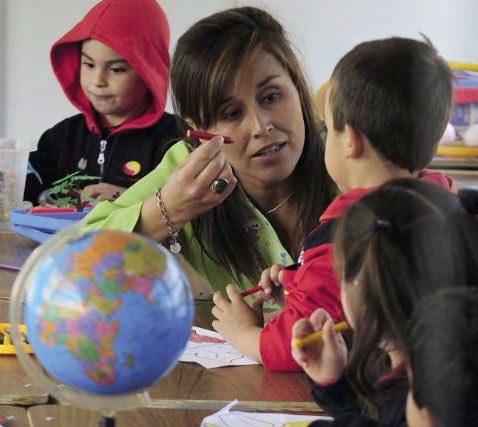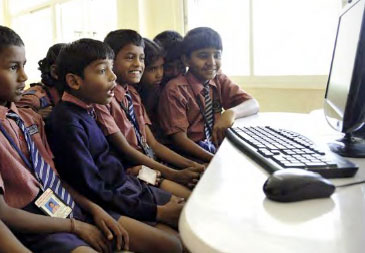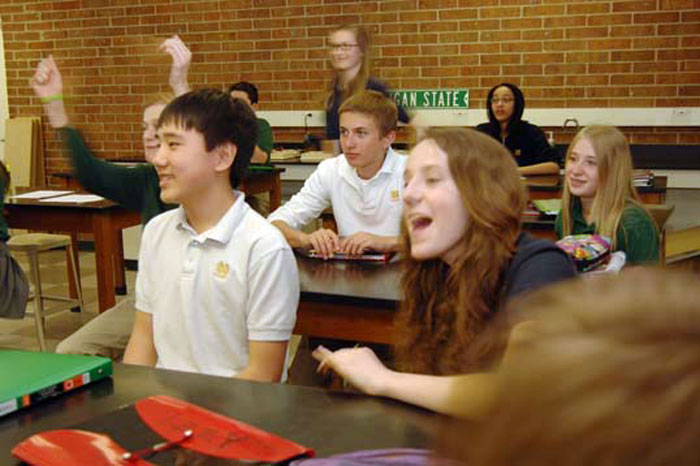(This article is from the latest edition of "IB World," a magazine published by the International Baccalaureate organization.)
Jon Marcus, writer for The Times of London's TES magazine and contributor to The Boston Globe and Washington Monthly, looks at the challenges facing international education over the next 45 years and how technology is changing the academic landscape
International education has always been a patchwork. Models and requirements are different, depending on where in the world you are. But now, more than ever, education systems and institutions have something very much in common: change.
The changes that have taken place in education over the last 65 years have been described by Fernando Reimer, director of International Education Policy at Harvard University, as "the most significant transformation that humanity has experienced." At the end of World War II, most children around the world did not have the opportunity to set foot in a school. Today, the reverse is true. "That's a huge advancement," says Reimer. "That this is happening in poor countries and rich countries gives us tremendous opportunities."
Children in Chile spend more than 1,000 hours a year in school.
But alongside these opportunities are, undoubtedly, many challenges. Some are already beginning to affect education systems around the world, and some will rear their heads in the medium and longer terms.
Students in India listen to stories read online by "Skype grannies” based in England
While the opportunity for an education is being extended to an unprecedented number of children, attendance and graduation rates for primary and secondary school students vary widely. And, in many parts of the world, the growing demand for higher education has outstripped the ability to provide it.
"Public institutions simply don't have the capacity, no matter how much money they're given. You can build a building in 18 months, but you can't build a faculty in 18 months," says Allan Goodman, CEO and president of the Institute of International Education. That raises quality concerns, he says.
The quality and suitability of existing curricula to prepare students for the rapidly changing world is also being called into question. Standardized testing has, argues Reimer, led to an approach that is "absolutely 20th-century" because it neglects crucial areas such as goal-setting, self-directed learning, planning for the long term and reflecting on and learning from experiences.
For many, a 21st-century education means making better use of new technology, and shifting to teaching students online. This has the potential to vastly expand access to, and bring down the cost of, education.
Learning outside the conventional classroom is not entirely new. Distance learning courses and 'open' universities are long established. But advances in technology have widened the potential of distance learning and its ability to reach even into the lowest grades. No- and low-cost international startups were among the first to collect free online courses and assemble them into programs of study, and now the world's top universities—some of which initially resisted the free-course movement—are diving into the fray with massively open online courses (MOOCs), which can serve tens of thousands of students at a time. And while the effectiveness of online learning has yet to be thoroughly researched—and it is unlikely to remain free as providers figure out ways to charge for assessment tests and other services—it's already changing and internationalizing education radically.
It is impossible to predict exactly what education will look like when the IB turns 90 in 2058. Perhaps classrooms will be a thing of the past, replaced by online learning in the home. Countries that are lagging behind in the education stakes right now might overtake traditional leaders to be at the forefront of learning development. Only one thing is for sure—the world of international education won't have stood still.
Follow Notre Dame at @NDPMA.
About Notre Dame Preparatory School and Marist Academy
Notre Dame Preparatory School and Marist Academy is a private, Catholic, independent, coeducational day school located in Oakland County. The school's upper division enrolls students in grades nine through twelve and has been named one of the nation's best 50 Catholic high schools (Acton Institute) four times since 2005. Notre Dame's middle and lower divisions enroll students in jr. kindergarten through grade eight. All three divisions are International Baccalaureate "World Schools." NDPMA is conducted by the Marist Fathers and Brothers and is accredited by the Independent Schools Association of the Central States and the North Central Association Commission on Accreditation and School Improvement. For more on Notre Dame Preparatory School and Marist Academy, visit the school's home page at www.ndpma.org.

